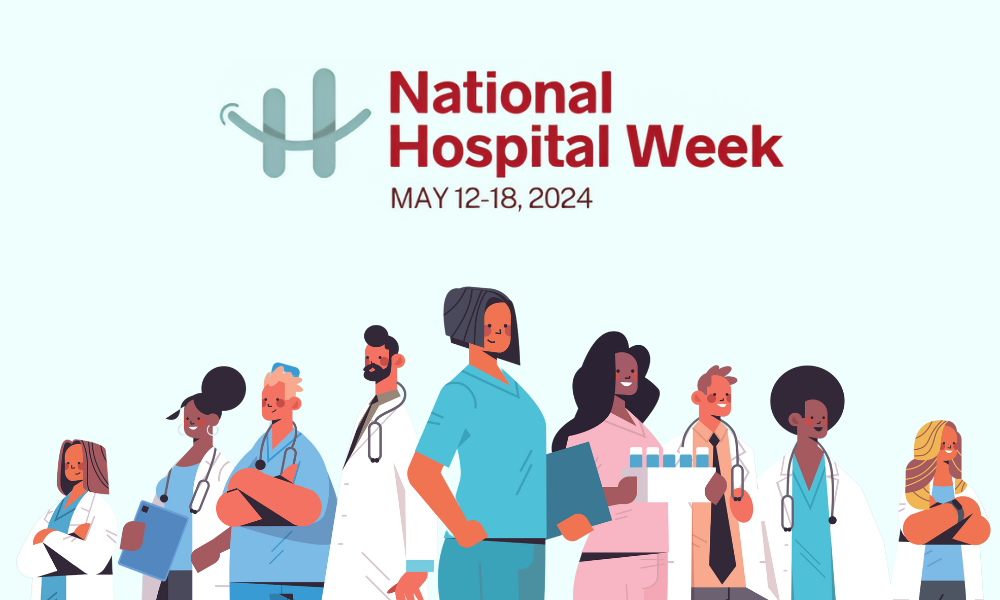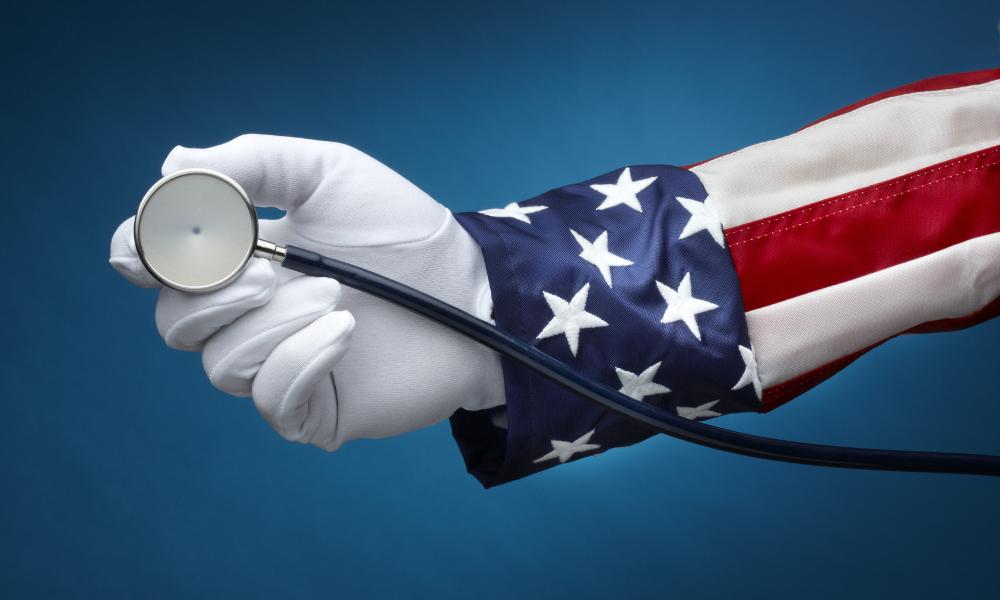This is the fifth of a six-part series on lessons learned from the COVID-19 pandemic, inspired by a conversation with Interim Physicians Medical Director Ken Teufel, MD.
Lesson #5: Healthcare Workers’ Mental Wellness Must be Supported

The stigma of a doctor or nurse’s seeking help for mental disorders like PTSD (post-traumatic-stress disorder) must be removed–especially in light of the coronavirus pandemic.
In discussing what we’ve learned from the COVID-19 outbreak so far, Dr. Ken Teufel referred to a May 6 article in the LA Times about the “wave of mental health disorders” hospital administrators anticipated among clinicians as a result of the COVID-19 pandemic.
“As many as 20 to 25 percent of healthcare workers in hard-hit areas, experts say, are likely to develop disorders such as anxiety, depression or post-traumatic stress—a rate similar to what is reported in soldiers returning from combat,” LA Times staff writer Del Quentin Wilber noted.
He shared one nurse’s determination to keep moving forward in spite of having “watched more than 30 patients die of coronavirus infection, and [having] sobbed while holding her phone close to them so loved ones could say their goodbyes.”
Wilber described how Mt. Sinai Hospital nurse Camille Davis spent her long drives home from work worrying about transmitting the disease to her eight-year-old son. She had told a colleague who wanted to quit, “We can’t quit. We have to keep working until we get sick.”
Imagine working under such stressful conditions with thoughts like these running through your mind.
In a February 4 blog post (before we started feeling the effects of caring for the critically ill during a major healthcare crisis), Dr. Ken quoted a recent RN Network study indicating that fully half of all nurses have thought about leaving their profession because of feeling burned out. He also highlighted a Marshall University study indicating that, because they represent 55 percent of hospital clinicians, nurses have become a frequent cost-cutting target, resulting in fewer nurses working longer hours to improve facilities’ bottom lines. It was one of two recent studies concluding that lower nurse-to-patient ratios negatively affect nurse performance and patient health outcomes.
While not a panacea, hiring locum tenens providers as part of a burnout-prevention staffing plan could help relieve some of the pressure today’s clinicians feel.
Well before we knew about COVID-19, between August and October 2019, Staff Care queried physicians for its 2020 Survey of Temporary Physician Staffing Trends report, finding that 72 percent of healthcare facility managers said they were seeking locum tenens physicians–an increase of 47 percent from 2016 findings. This was the highest percentage Staff Care ever recorded in 14 years of conducting annual surveys.
More than half of respondents (56 percent) reported using one to three locums providers per month, while another 33 percent reported using four or more per month–19 percent of those using seven or more.
Furthermore, LocumTenens.com’s 2019 Locum Tenens Engagements survey report indicated that healthcare executives and administrators have begun to consider locum tenens a key part of longer-term staffing strategies. Rather than simply a way to fill gaps in staffing, they now view temporary clinicians as an option for balancing staff workloads and enabling greater flexibility in facility operations into the foreseeable future.
Mental Health Matters
In a paper published April 15 in the Lancet Psychiatry journal, researchers called for better monitoring of mental health as part of the global response to the pandemic, according to CNN. The paper, which drew on the work of 24 mental health experts, including neuroscientists; psychiatrists; psychologists and public health experts, cited polls showing the public was already concerned about coronavirus and mental health, and worried about the effect of social isolation or distancing on well-being, including increased anxiety, stress and depression.
In fact, in briefing media on survey results, the head of the University of Cambridge Psychiatry Department observed that respondents’ reported levels of anxiety, depression and stress ranked higher than their fears of contracting the physical illness. “The researchers said that frontline medical staff and vulnerable groups such as elderly people and those with preexisting mental health conditions should be prioritized for support,” CNN reported.
Burnout Is Common
“Burnout” presents the biggest mental health risk among today’s clinicians, according to data and reports from many reliable sources. In its National Physician Burnout & Suicide Report 2020: The Generational Divide, Medscape noted, “Burnout has been described as long-term, unresolvable, job-related stress that leads to exhaustion, cynicism, feelings of detachment from one’s job responsibilities, and lack of a sense of personal accomplishment.”
Among more than 15,000 physicians practicing in the US in more than 29 specialties who responded to this year’s 10-minute, online survey between June 25 and September 19, 2019 (whew!), 42 percent reported feeling burned out, down from 46 percent in 2015. Specialties ranking highest in reported physician burnout over the past five years were critical care, emergency medicine, family medicine, internal medicine, neurology and urology.
Medscape’s survey report quoted Yale New Haven Hospital physician Frank John Ninivaggi, MD, author of Learned Mindfulness: Physician Engagement and MD Wellness: “The percentage of physicians feeling burned out remains fairly consistent. The leading cause is administrative burden, as driven by the workplace and organizational culture.” Medscape’s findings supported his claim.
Gen X, Women Physicians Fare Worse
Physicians from Generation X reported “noticeably more burnout than other groups,” the survey found. Staff development experts suggest that Gen X clinicians, currently at mid-career level, are likely juggling multiple roles outside of work–like caring for both children at home and elderly parents, and working while preparing for retirement–which multiplies the effects of on-the-job stress. Also, women physicians (48 percent in 2020) consistently have reported higher percentages of burnout than men (37 percent in 2020) over the past five years. Good news from Medscape’s National Physician Burnout & Suicide Report 2020: The Generational Divide: “Physicians are more likely to use positive coping mechanisms, rather than ‘escape’ or self-medicating activities to deal with burnout.”
Top strategies chosen by respondents overall were self-isolation (45 percent), exercise (45 percent), talking with family/close friends (42 percent) and sleep (40 percent).
While 33 percent chose “eating junk food,” only 24 percent reported drinking alcohol, and only 20 percent reported “binge eating.” Much smaller percentages reported “smoking cigarettes/using products containing nicotine” (3 percent),” using prescription drugs” (2 percent), or “smoking marijuana/consuming marijuana products” (1 percent).
About half of physicians of all generations would choose more free time for less pay–53 percent of women versus 47 percent of men.
By generation, millennial physicians favored sleep to ease burnout (56 percent). Generation X and baby boomer physicians more often reported exercising (46 versus 44 percent, respectively) or self-isolating (45 percent each). Meanwhile, 49 percent of physicians of all generations would choose more free time for less pay (52 percent of millennials, 48 percent of Gen Xers, 49 percent of boomers)–53 percent of women versus 47 percent of men.
Depression, Suicide Rates Low
“Burnout and depression are not the same, although burnout may lead to depression,” Medscape noted. While 15 percent of millennials, 18 percent of Gen Xers, and 16 percent of boomers reported being depressed, “about two-thirds considered it ‘colloquial’ depression (feeling sad, down or blue), while less than one-third described it as ‘clinical’ depression (prolonged severe depression not caused by a grief-associated event).”
Only one (men) to two (women) percent of physicians had attempted suicide, but 22 (women) to 23 percent (men) reported having had suicidal thoughts. “Handling it by themselves is the norm for almost two-thirds of all physicians,” Medscape found. One cardiologist said,” I don’t think burnout is a psychiatric problem or my personal problem. I think it is inherent in the present way of healthcare delivery, at least in the US.”
Almost half of responding physicians (48 percent) said their workplaces didn’t offer stress-reduction programs, while another 22 percent didn’t know. However, 42 percent overall said they didn’t think they would use such a program if it were available. “Many physicians don’t believe such programs are helpful; others don’t want to let colleagues at their workplaces know they’re feeling burned out,” the report’s authors noted.
Nevertheless, 60 percent of specialists and 54 percent of primary care physicians reported being happy with their work lives, according to Medscape’s survey results. The highest percentages of respondents were in family medicine (11 percent), anesthesiology (10 percent), internal medicine (10 percent), pediatrics (10 percent), emergency medicine (nine percent), and psychiatry (seven percent).
Note to Readers: The Medscape data highlighted above was gathered before the COVID-19 pandemic hit the United States.
Providers Want to Work
In a June 1 article that ran on MedPageToday.com, Weatherby President Bill Heller discussed results of a more recent survey conducted by Weatherby’s parent company CHG Healthcare. Among more than 1,200 providers surveyed, only 50 percent of respondents were working full-time, 20 percent worked locum tenens, and 10 percent worked part-time.
Seventy-four percent of respondents said they were working less than before the pandemic hit, with 56 percent working “significantly less.” While seven percent were laid off and another six percent furloughed, only 11 percent reported working more hours than before COVID-19 struck.
“In an industry that many have called ‘recession-proof,’ the disruption to healthcare providers’ work is unprecedented,” Heller said. Survey respondents cited lower patient volumes (43 percent) and suspended elective care (26 percent) as primary causes of their reduced work schedules. Only two percent of providers voluntarily had cut back work hours.
“Healthcare workers are experiencing high levels of distress,” Heller noted. CHG found that 72 percent reported having slightly or significantly more anxiety since the pandemic began, and nearly all (92 percent) were concerned about contracting the virus. “Despite these concerns, providers wanted to get back to work,” Heller observed. Seventy-three percent wanted elective care to resume within the next month, while another 22 percent wanted to return to work within two to three months.
Interestingly, however, fewer than half of respondents (44 percent) planned to stay with their current employers. CHG reported that 37 percent planned to work locum tenens assignments and 30 percent hoped to work in telehealth. Almost a quarter of respondents (24 percent) planned to change employers.
In concluding his article, Heller suggested, “Figuring out how to get all of our healthcare workers back to work, in a safe and careful manner, should be our top priority–so they can get back to doing what they do best: caring for patients.”








